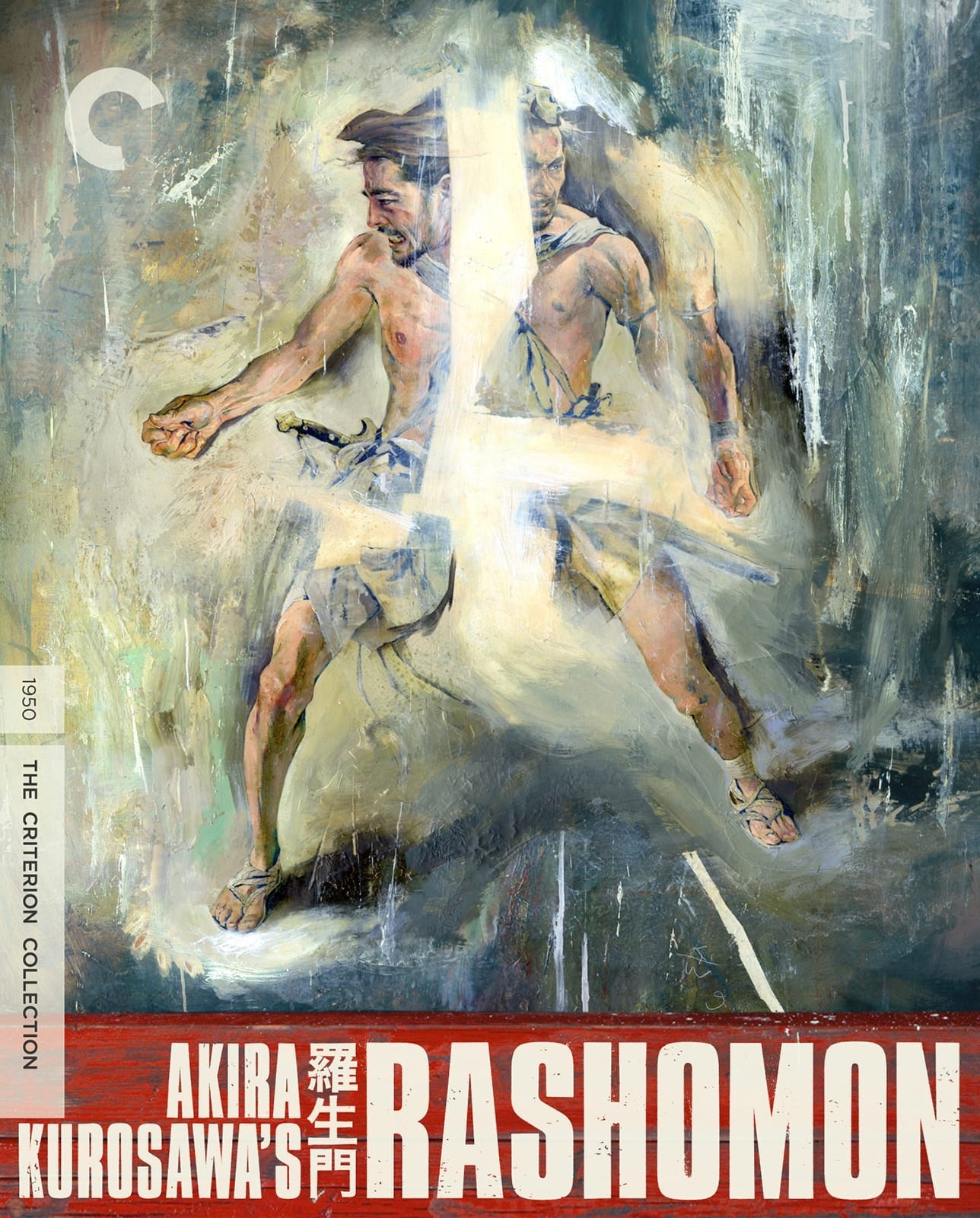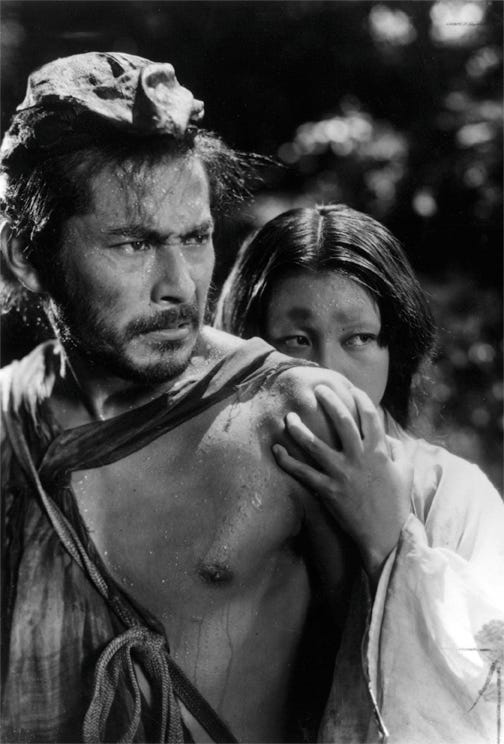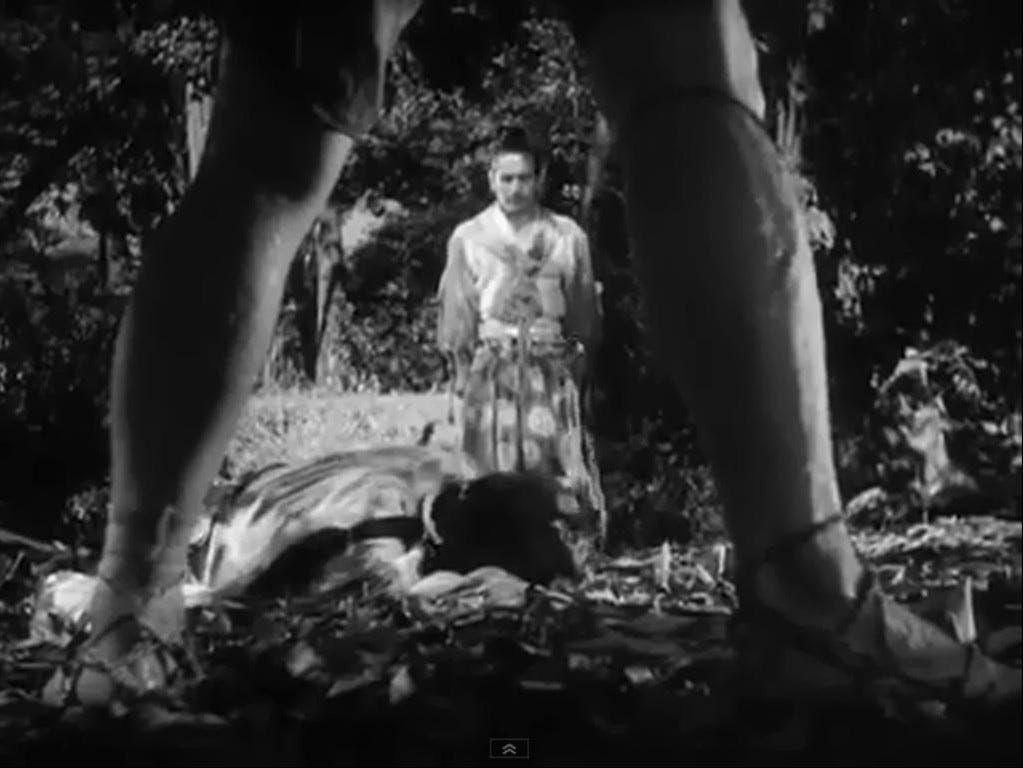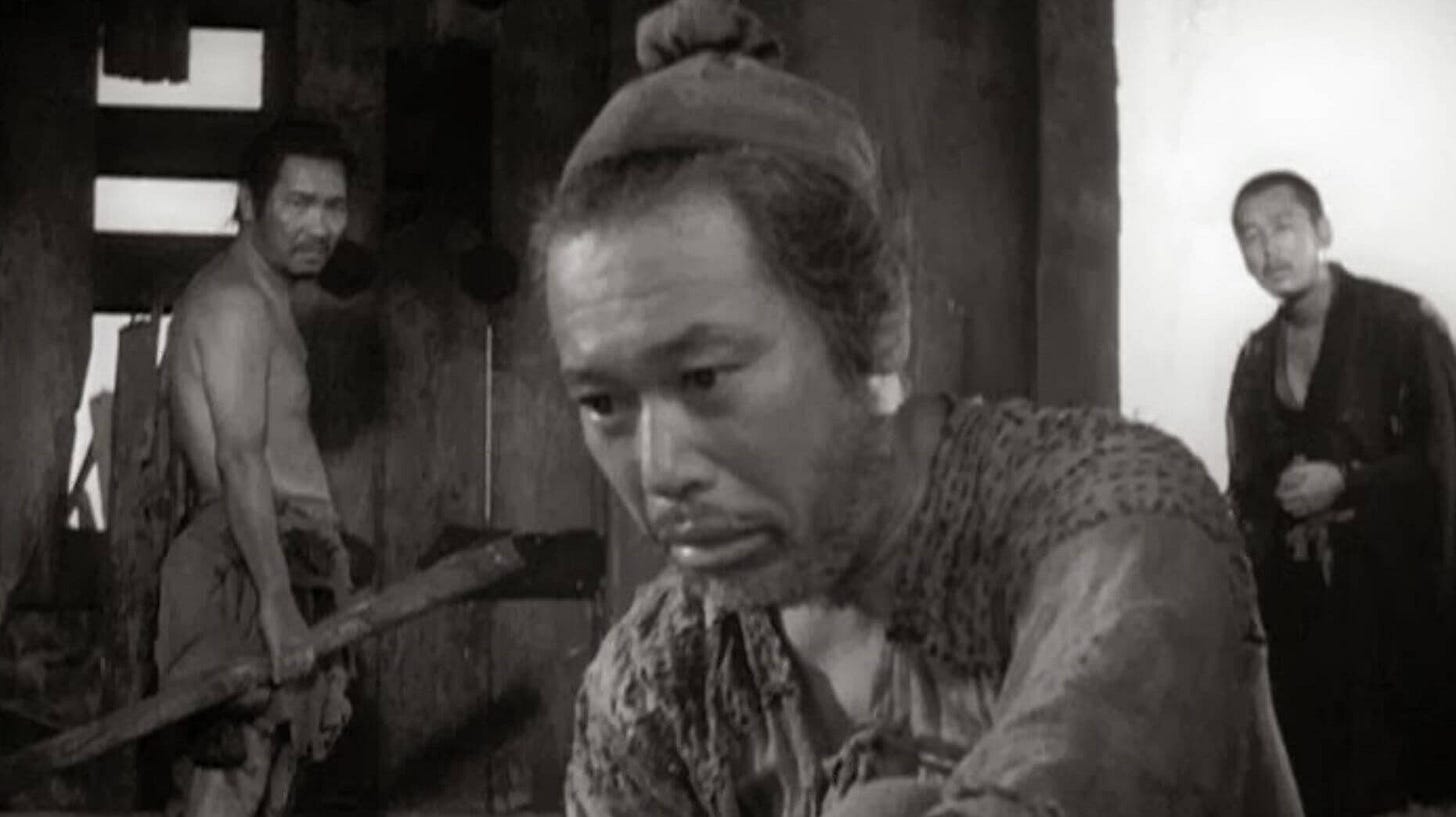The Favourites
Rashomon
Akira Kurosawa’a Rashomon is a masterpiece in the dissecting of the follies of humanity and the purpose of storytelling. Dismantling the tale of murder in the woods, told from the perspective of the three individuals involved, the bandit, the wife, and the husband. These tales are told through the framing device of a priest and a woodcutter telling a commoner about the unexplainable trial they had bore witness to. A nesting doll of truths and lies, the film explores the differences between the versions of events of the three witnesses and the narrow line between the lies we tell ourselves and the truth of our everyday. A lie to one is the truth to another, and it’s in this malleability of existence that the film thrives.
The three framing characters are attempting to derive the truth from the tales they have heard, to separate the lies from what is real. But these tales vary so broadly, and the emotions behind each tale so vastly that it is impossible for an outsider to sift through the words spoken and lift an objective truth from them. Even if our outside observers found one version more believable than another, those inclinations are reached through their own worldview as well. Someone who has experienced an unbelievable event is all the more likely to believe it when someone else experiences the same. What has happened to us not only informs how we act, but how we interpret the actions of others.
As such our three interpreters (the priest, the woodcutter, the commoner) bring their own worldviews into the deciphering of the murder. The commoner does not believe the women, stating “women use their tears to fool everyone. They even fool themselves.” The man of faith is unable to parse any truth from the tale, he is virtually frozen in place by the drastic differences in the tellings. His faith is shaken by what he hears, and it affects him so deeply that he starts losing faith in all of mankind, for if lies come so easily from us, as easily as breath, then what souls are there to save? The woodcutter, revealed in the final act of the film, is shown to have witnessed the crime himself, but even his tale is unbelievable as the commoner quickly susses out that there are falsehoods in this version. The woodcutter had stolen a bejeweled dagger, a part that he left out in his initial retelling, showing that it’s not just what we say that can obscure the truth, but what we don’t say as well.
Diving into the three stories we are shown, each casts their respective teller in a better light (as is expected) but we can also see how they see the other people in the story. The bandit, while being a rogue, is an amazing, irresistible lover, one who a woman would through herself if given the chance. He also sees himself as a man of respect, as he refuses to kill a man tied up, insisting on a fair duel (one in which he is the victor). This telling, at first, seems obviously a lie. What bandit would not take the chance to make themselves to be the hero, to be honourable? During the trial, Tajomura is heaving, drenched in sweat, near mad, playing the role of the bandit. The dichotomy between how he is presenting himself at the trial and how he is presenting himself in the story highlights the separation between who we are to others and who we are to ourselves.
”It’s human to lie. Most of the time we can’t even be honest with ourselves.”
We are then given the story by the wife. In her version of events, she is assaulted by the bandit, and her husband despises her for it. After the husband is free he rebukes her, as he feels she is a “ruined woman” after her assault. This emotional blow causes her to faint, and when she awakes her husband has committed suicide. She tries to end her life as well by drowning but is saved. In this version, she is the victim, completely and without question, and this is the only version of events in which that is the case. In fact, this is the only version in which one character is framed solely as a victim. In all other accounts, everyone could be perceived as a victim and perpetrator in some regard. Framing herself as the victim exclusively is both a positive and a negative in her defense, as it plays into stereotypes. On the one hand, if to be believed, her version plays into the stereotype of women as weak and oppressed not just by the roughness of the world at large but even within the dynamics of close relationships. On the other hand, if people do not believe her, her story plays to the idea that women use perceived frailty and crocodile tears as a way to escape judgment. The dual reading of this story is a microcosm of the themes of the entire film, that it is in the eyes of the beholder that the truth lies.
In the tale told by the dead husband (told through a medium - yet another layer of artifice separating the audience from the story) we are given yet another version of events, one that falls between the bandit and the wife. In this version, the samurai commits suicide after his wife shames him by agreeing to marry the bandit who ravished her. He also claims that the wife tried to get Tajomura to murder the samurai, so that she could be free, and that the bandit refused, instead deciding to kill her. This version is interesting when it comes to the demise of the samurai, as he claims to have taken his own life. This could be seen as an honourable act (the role of suicide within Japanese culture is a complicated subject I am not nearly equipped to handle) compared to having lost his life in battle with the bandit. The samurai is uninterested in making himself heroic or chivalrous in life and chooses to focus on (possibly) altering his death. This draws a direct connection between how we see the world and legacy.
Legacy is an important idea when discussing this film. Every story leaves a legacy, and legacy directly contributes to how you are remembered (whether living or dead). Legacy is elevated remembrance. In so deliberately changing his death, the samurai is changing his final legacy. Every other character has an opportunity to change, to alter their story repeatedly, to rewrite history in the eyes of the living. The samurai has this one chance only, so we focus on making his death as honourable as it can be. Legacy is the driving factor in his story, and what ultimately is most important to pay attention to during his telling.
“A human life is truly as frail and fleeting as the morning dew.”
The final version of the story is told by the woodcutter, who finally admits to having been a witness to the events. While one might be tempted to automatically see this as the “true” version of events, we already know that is false when the woodcutter begins his retelling. He’s already altered the tale by removing himself from it once before, showing that his version, even though presented from a supposedly removed point of view, is still subject to the same scrutiny as those more directly involved. This is again reinforced when it’s revealed that the woodcutter had stolen the woman’s dagger, another fact he initially leaves out. The woodcutter, though not directly involved in the rape and murder, wishes to present himself in a good light, not for the sake of those listening, but for himself. He shows that we lie to ourselves as much as we lie to others, and that even if we tell these lies there is an objective truth. Deciphering the emotional reality from the objective one is something we will forever struggle with, as these are at times polar opposites. Admitting our faults can be a terrible thing, so instead we change who we are in our stories.
“We all want to forget something, so we tell stories. It’s easier that way.”
But in facing our reality, we can also set ourselves free. This is shown in the closing moments of the film. After the woodcutter admits to having taken and sold the dagger, his shame is fully revealed, and he is able to take in the abandoned baby. Upon this act, the downpour that has plagued the film ends, and the sky clears for the very first time. With the sun shining we are able to see far and wide, the fog of delusion having been lifted. While the truth of what happened in that grove will never truly be known, the one character who owned up to his faults is rewarded for it, and the priest is able to have his faith in humanity restored. In facing our guilt, we may not find truth, but we can find redemption. And no stronger legacy exists than redemption.






